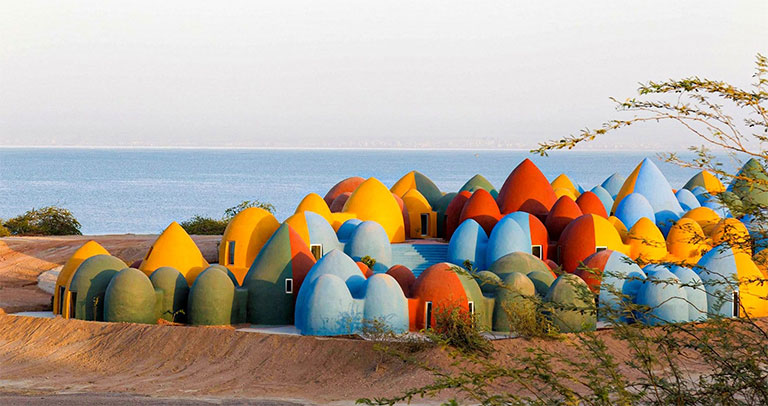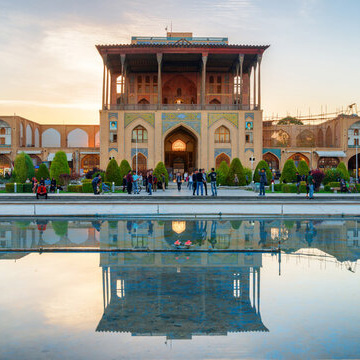A look at Persepolis in Shiraz

Persepolis (Takht-e Jamshid) the ceremonial capital of the Achaemenid Empire, is located about 30 miles northeast of Shīrāz in the Marvdasht Plains, surrounded by the southern Zagros Mountains, Fars Province in Iran. It is one of Iran’s major cultural heritage sites with majestic features, monumental stairways, throne rooms which was built by Darius I (522-488 BCE). It is recognized a UNESCO World Heritage Site since 1979.
Persepolis is one of the most unique historical monuments in the world located in Shiraz. Shiraz is a city with a long history, which is known as the city of literature. This historical city is one of the beautiful tourist attractions. In the heart of Shiraz, many magnificent historical monuments and buildings can be seen. Persepolis is one of these glorious attractions.
Persepolis is considered one of the spectacular architectural masterpieces, in other words one of the wonders of the ancient world. The historical monument of this place is known all over the world. Even some of its inscriptions, columns and ancient works are kept in the museums of foreign countries. It is considered one of the most momentous and magnificent historical monuments of Iran and the world. The construction of this historic and spectacular complex has lasted about 188 years. The completion of Persepolis continued until the reigns of Darius the Great, Khashayarshah and Ardashir I.

Persepolis constitutes one of the most important archaeological repertoires of the ancient Persian Empire. The term comes from Greek and means “city of the Persians”, “Persian City”. Iranians call the city “Takhte Jamshid”.
Persepolis dates back to 2500 years ago. This magnificent monument has witnessed and hosted numerous celebrations throughout the history.
Persepolis is a huge and historical complex that has dozens of magnificent palaces in the heart of Shiraz, including:
- Apadana Palace, the oldest palace of Persepolis
- Queen’s Palace, Persepolis Museum
- Thatcher Palace, the magnificent hall of mirrors
- Hadish Palace, the mysterious palace of Persepolis
- A Hundred Column Palace, Throne Hall
- Three-door palace, the council hall or the council chamber (central palace)
- Palace “H”, the most different palace in Persepolis in terms of stonework
- The “G” Palace ,the undiscovered palace of Persepolis
- Gate of All Nations, the most magnificent gate of Persepolis

Why was it damaged?
The destruction of Persepolis was occurred in 330 BC In the 4th century BC, Persepolis was largely destroyed by the troops of Alexander the Great. The attack was seen as revenge to the Persians for the destruction of the Athenian acropolis during the Persian Wars between 480 and 479 BC.
History of Persepolis
Inscriptions indicate that construction of the city began under Darius I commonly known as Darius the Great. According to the available documents, the construction of this huge and historical building was started about 500 years BC by the order of Darius the Great, and it took 150 years to finish the construction of the whole parts.
In fact, the son and grandson of Darius, namely Xerxes and Ardashir I, expanded this ancient city by adding several large buildings and structures to the first complex.
One of the most obvious features of Persepolis is its approximately 125,000 square meters and inscriptions, paintings and ancient artworks that can be found in few places. The stone inscriptions found in Persepolis provide us with valuable information about the rich and fruitful history of Iran. In addition, the wonderful architecture of this complex has shown the very high architectural ability and art of Persian architects.
During the period of the Pahlavi kingdom, the reconstruction of Persepolis was began and while the excavation operation, an inscription of Khashayar Shah was discovered and through it the Palace of the Queen of Khashayar Shah was identified.
Takhat-e Jamshid can be considered a symbol of glory and greatness in ancient Persia and one of the most important documents in the history of world civilization. This historical city is also known as Persepolis, which is called by its Greek name.
Sight-seeing places near Persepolis, Shiraz
- Naghse Rostam, the tomb of Achaemenid kings
- Pasargad, the tomb of Cyrus the Great
In this place, there is the tomb of Cyrus the Great (Eunesco World Heritage Site), a prayer hall, a private or living palace, the Baram Palace, Stone tower, Gate Palace, Tall-e Takht, water fountains in Bagh Shahi, the Mozaffari Caravanserai, and the sacred precinct.
3 . Naqsh Rajab is located 3 km from Takht Jamshid, Shiraz, another stunning monument, which takes 10 minutes to get there. In this place, the role of Ardashir’s coronation, Shapur the Great and his companions, and Shapur’s coronation can be seen.
Interested in visiting Mizad Tower?
We have prepared tours that include Tehran for you.







